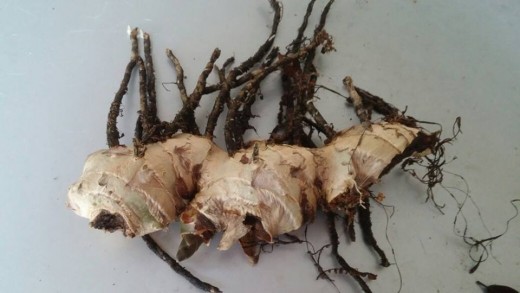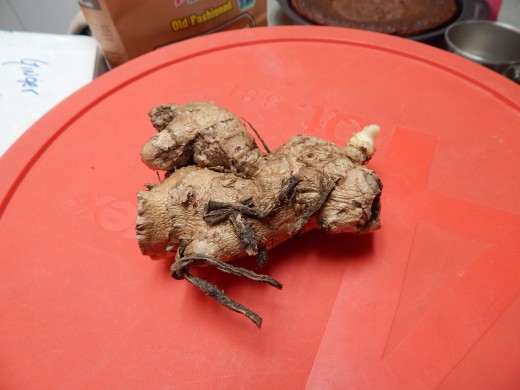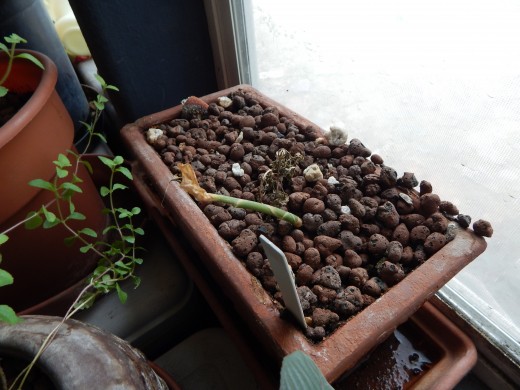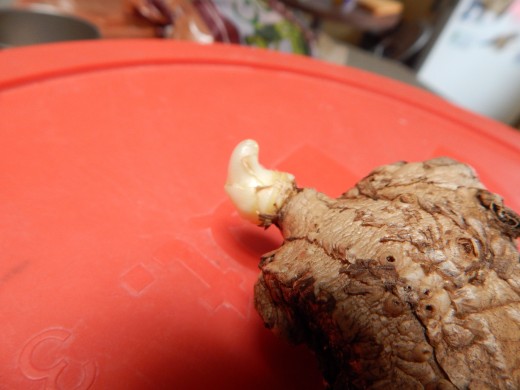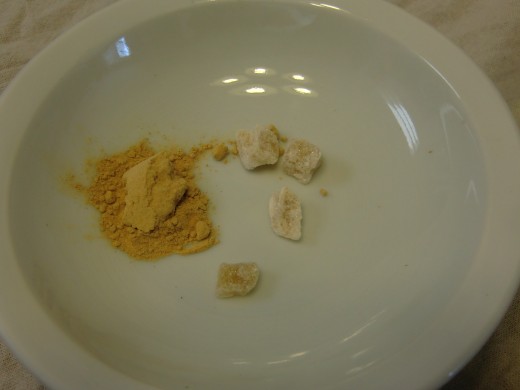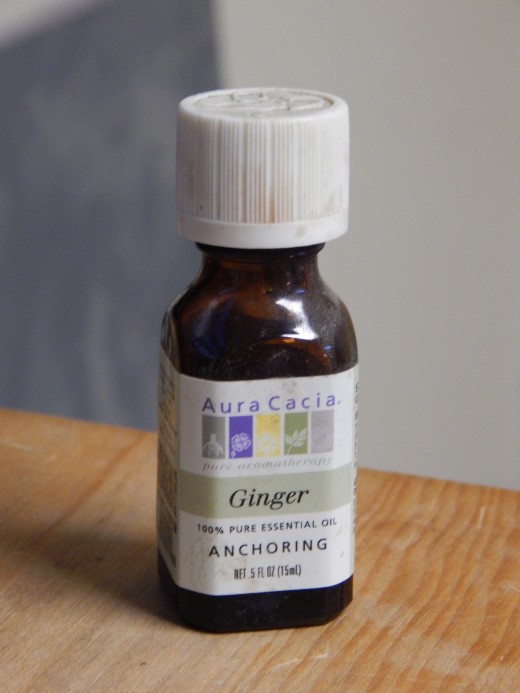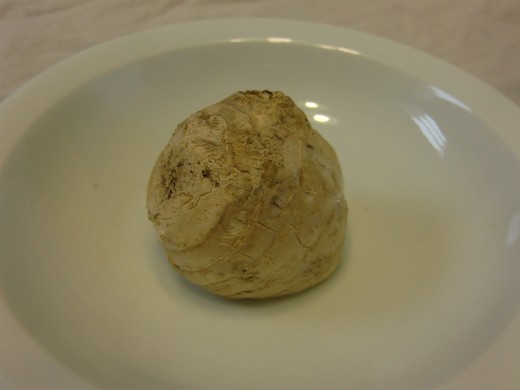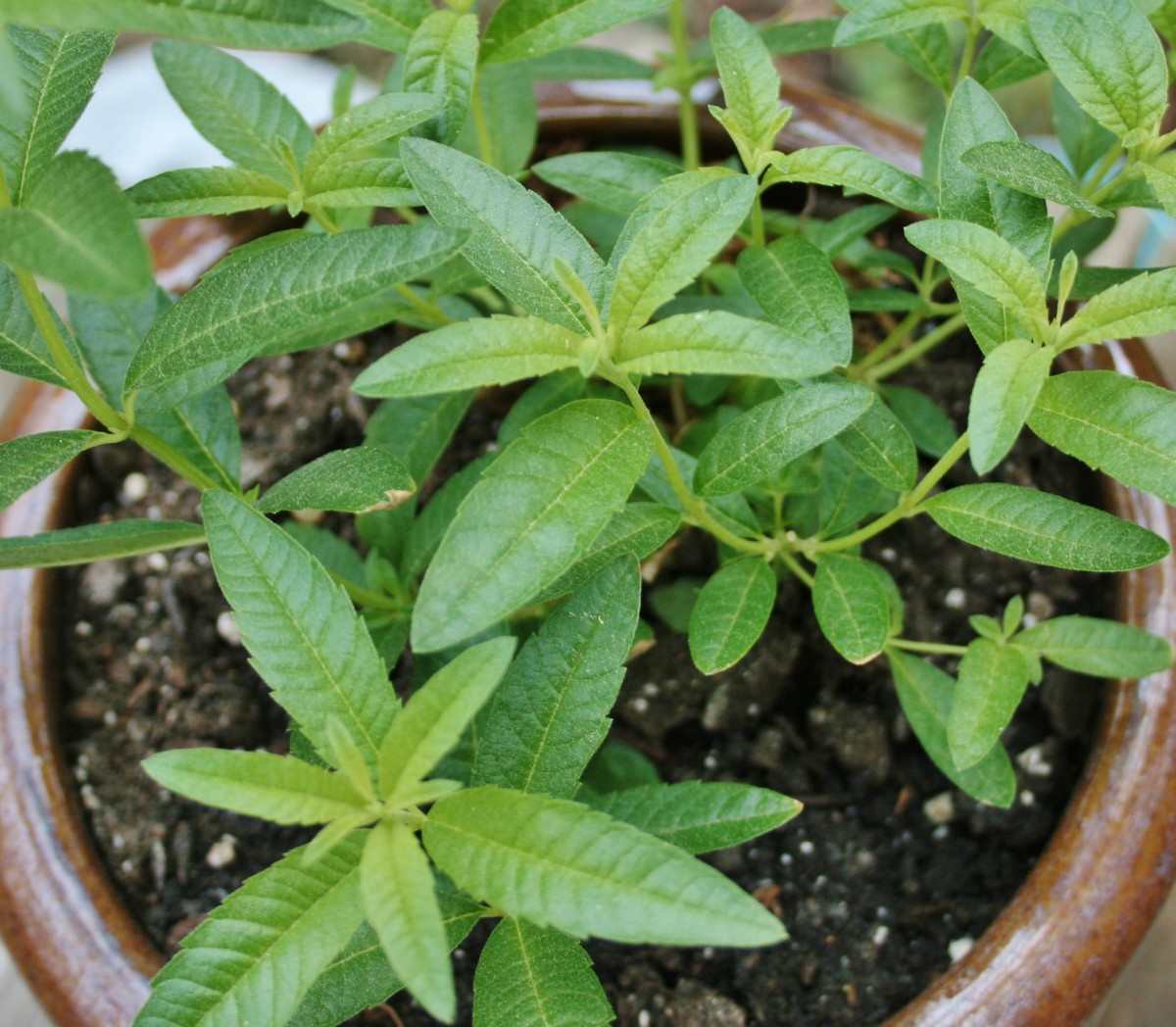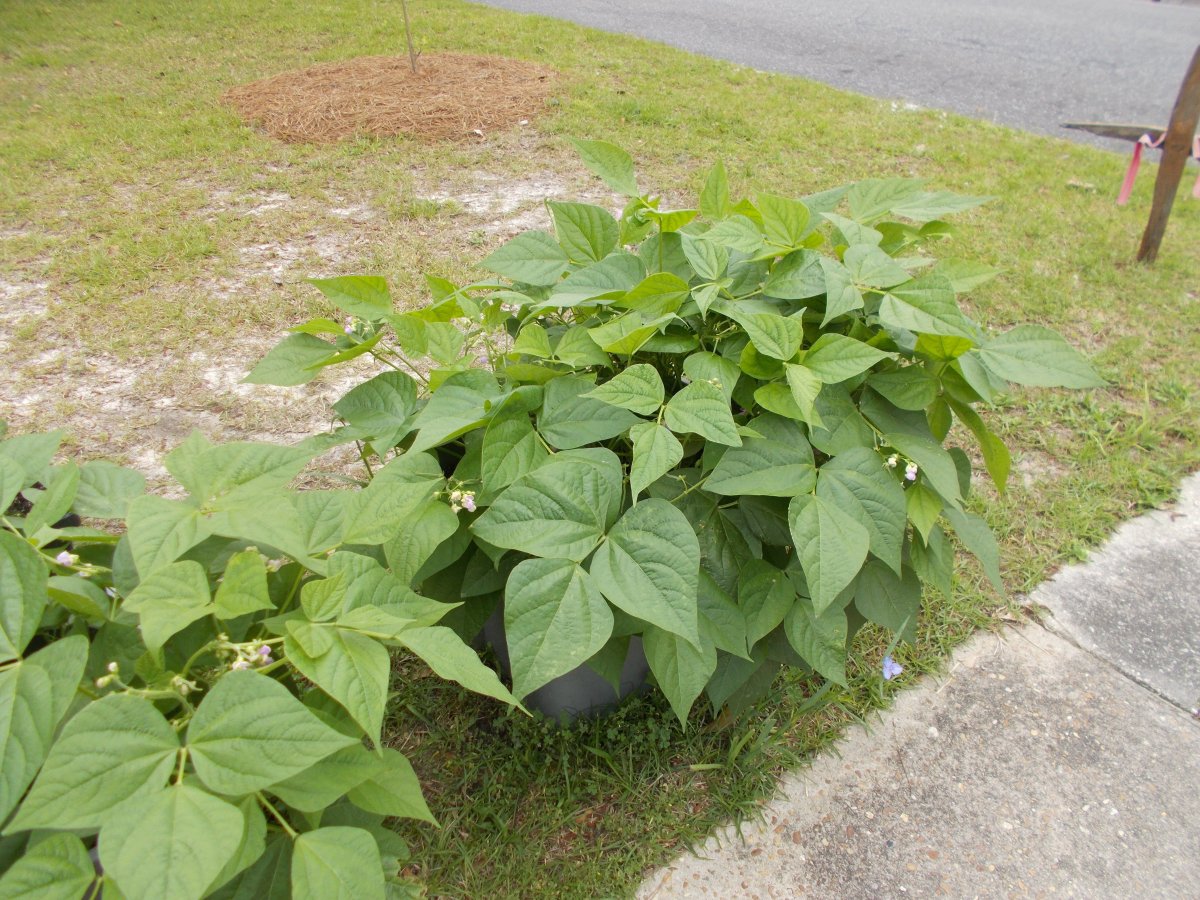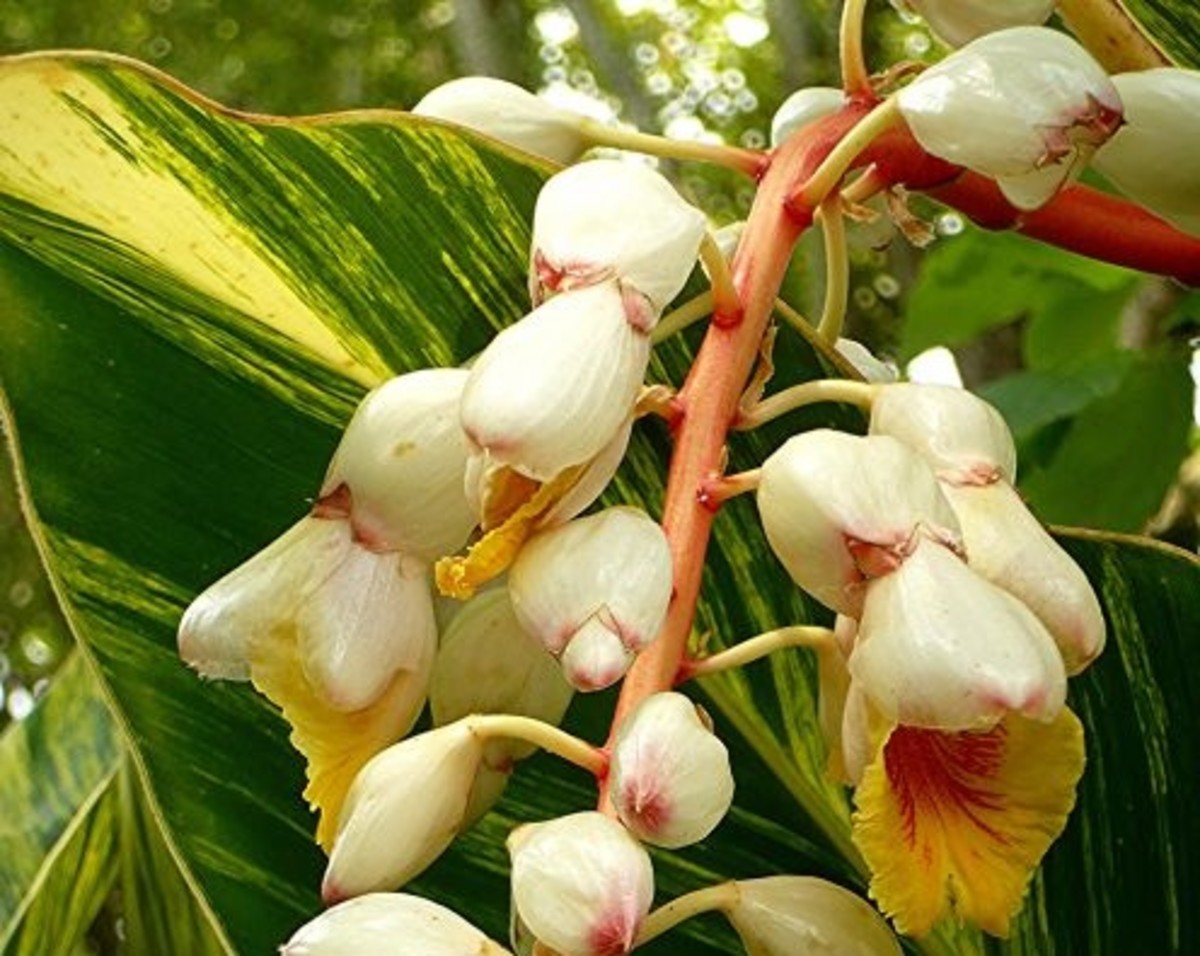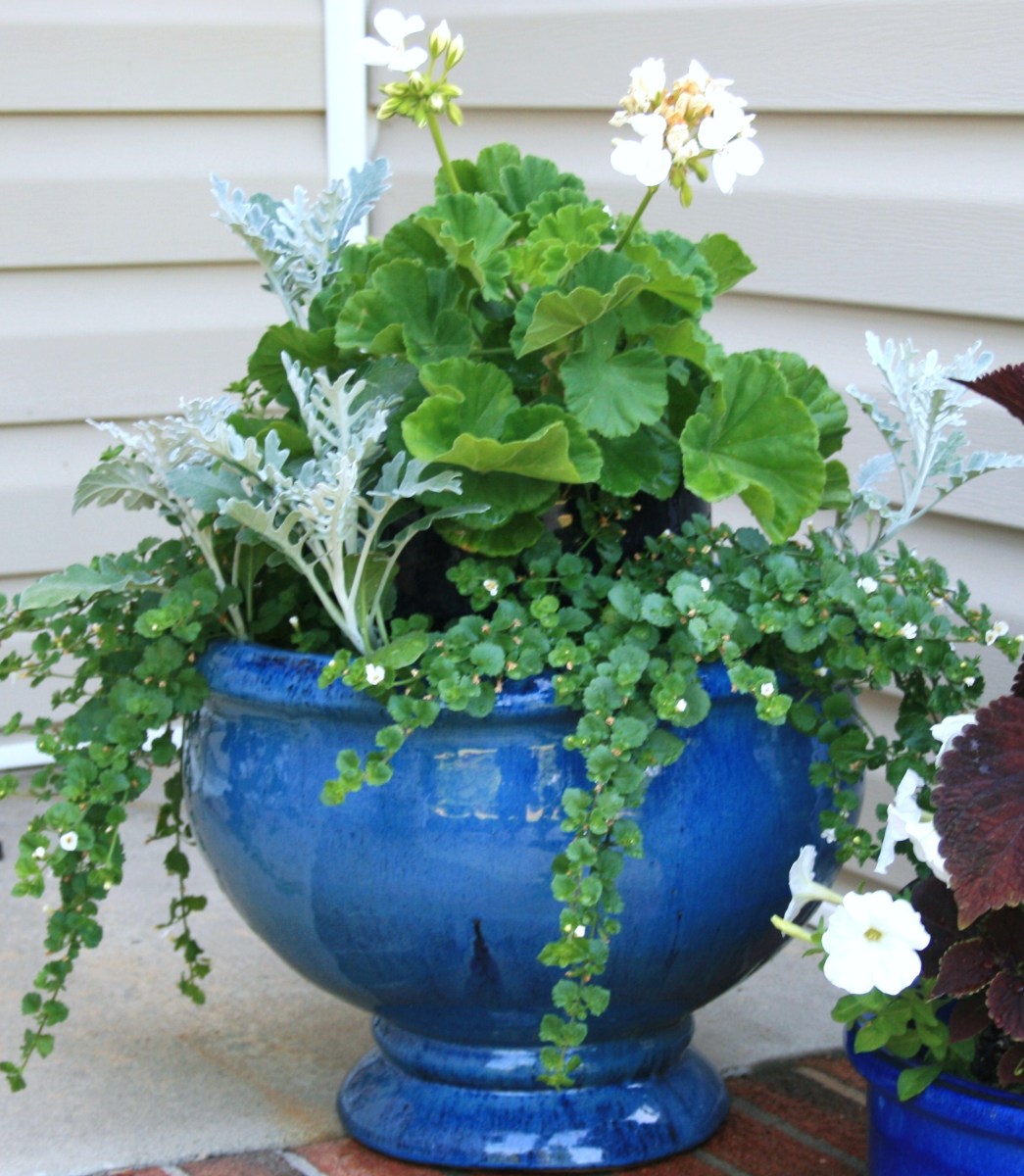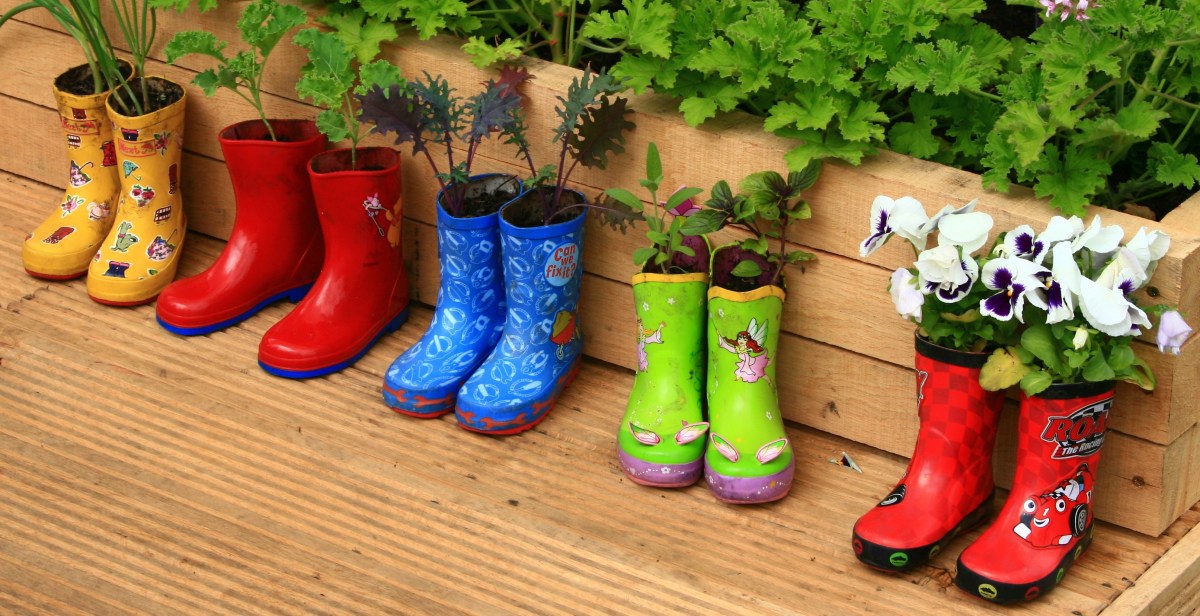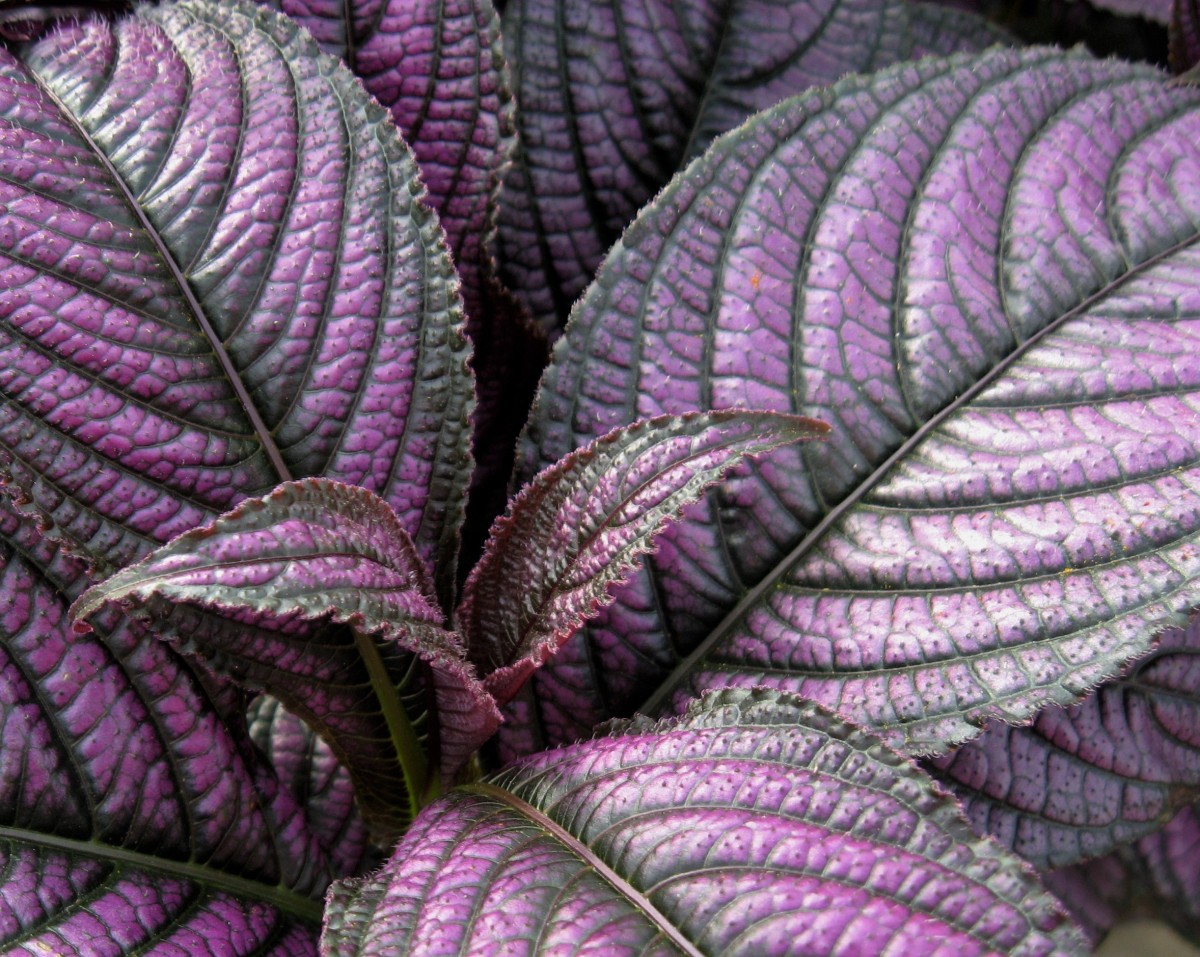Growing Ginger as Houseplants
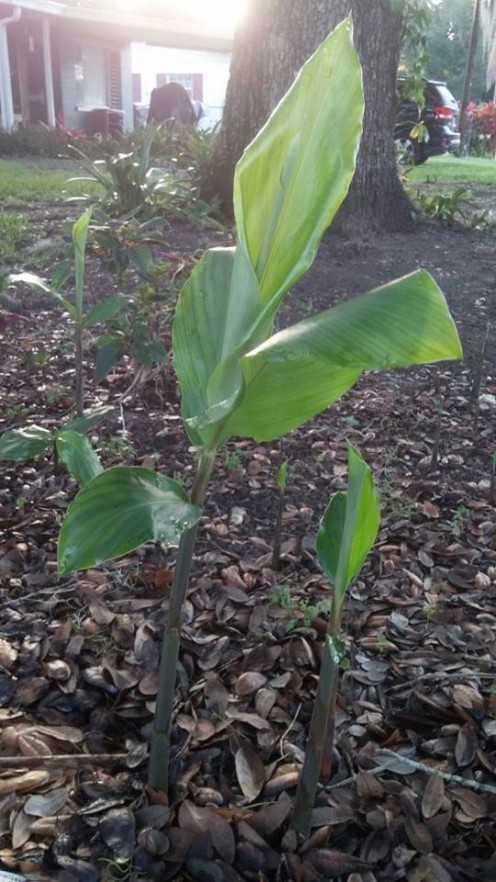
I never really thought about adding Ginger to my home garden until it dawned on me how many edibles contain Ginger. Ginger is a root crop used as a spice to flavor culinary concoctions. Ginger Ale, Ginger Beer, Gingerbread, pumpkin pie, Chai Tea, Asian Foods, Indian Foods......the list is enormous......
The idea of growing my own food is very appealing to me. It gives me a certain amount of control over things. When you grow your own you expand your selection to varieties not generally available at the store.
You control HOW it is grown, what kind of fertilizers are used, pesticide use, companion planting, etc.....
While some challenges surround indoor propagation, bugs being the big one, Ginger seems to be void of these issues....
Getting Started
What you'll need:
Sandy Soil Subtrate
Long, narrow, shallow pot
Drip pan to fit
Small pebbles
Ginger Root
Growing Ginger
Ginger ( Zingiber officinalis) is another one of those plants, like pineapple, that won't grow where I live. Ginger is hardy in Zones 9-11, I live in zone 4 (5). Ginger is native to India which falls in the Tropical regions. I live in Montana.....it snows here.....far from tropical conditions......
It is best started from a chunk of root. Sure, you can purchase an organically grown root from the store, I am not sure if it will sprout or not. I discovered that some of our produce (garlic) is inoculated before being shipped to store. Inoculation prevents the produce from being propagated at home. I do not know if Ginger is one of them or not. I asked my mother to mail me a root in the next care package.
Common Ginger and Pinecone Ginger (Zingiber zerumbet) both prefer tropical climates. They like it hot, and humid. Common Ginger prefers more sun than Pinecone Ginger. Pinecone Ginger flowers fairly reliably, while Common Ginger may or may not. Both are edible.
I queried my mother over this perennial that grows freely in her yard and she said, "pretend it's an Iris". Well that's easy! Iris need almost no care, a fairly shallow growing area, minimal water, and sun.
Once you acquire a root you'll want to place it in a cool dark place until new growth begins to appear. This can take awhile. Place it in or on a cardboard box during storage to avoid temperature fluctuation and to discourage rot.
I decided to use a similar subtrate mix that I used for the Pineapple. Sandy with some organic material mixed throughout. About 2/3 sand to 1/3 Top Soil (or Potting Mix) with a dash of Compost (Or Manure).
You'll want a rectangular pot about 6-8" deep. Fill your pot about half way with subtrate. Place root, new growth up, on top of the subtrate. Top with remaining subtrate, completely covering the nub of new growth. Water once and add subtrate to top off what settled. Water again in a week or so when soil is dry and you can see new growth emerging. Ginger is fairly drought tolerant, try not to over water. Roots like Ginger store water in the bulbous parts (the part we use in the kitchen), the tendril roots bring the water to the bulb as needed. Too much water, too wet of conditions, can cause your root to rot. Allow the soil to dry completely between watering.
Providing humidity for your tropicals is fairly simple. Line your pots drip tray with small pebbles or fish tank rocks. Aquarium rocks come in a variety of colors and can add a little personality to your indoor hot house of exotic plants. Place your pot in the drip pan on top of the medium you chose. Fill drip pan with water. As the heat rises, the water evaporates upwards and your tropicals receive the humidity.
**** fyi: not all plants need or like humidity. Desert plants prefer it dry and arid. If you keep a variety of both, you might consider separating them. Too much humidity can cause desert plants to grow mold and possibly acquire a fungus, and eventually die.
It may need shade.....if you notice the tips of the ginger foliage browning it's getting too much direct sun. Ginger likes it bright and sunny but not directly. You may have to move him around a bit until he finds his happy spot.
Ginger may go dormant or die back if conditions demand it. Dont be alarmed. And dont water it......let it go.....set the pot aside and come back to it in a month or so. Then offer it a little water every few weeks. It will re-emerge in Spring.
Ginger
Click thumbnail to view full-size



Mixing your own Subtrate
What You will need:
2/3 Sand
1/3 Top Soil or Potting Mix
Dash Compost or Manure
Blend Well
Why to make your own Subtrate
The soil where you live is unique to your area. Your soil is made up of tiny particles, sand, minerals, clay, compost, loam. Your local DNRC or extension office can go into extreme detail on this subject, but it may bore you to tears. Different plant life requires different soils and different minerals. Which is why some plants grow better in one place than another, it s not just weather.
When you mix your own subtrate, you control how many parts of each type of soil are present in the final product. For our Ginger root, we consider where it grows when we mix our soil to best recreate its preferred growing conditions.
Subtrates and soil types can get very technical which is why going to purchase potting soils can be so daunting. There's Potting mix for roses, tomatoes, cactus, bromelaids, and many more. There's organic and non organic, seed start or potting mix, perlites, and peats. It's easier to just mix your own. And it s really very simple. For this project you need three things, four if you include a wheel barrow or tub to mix it in.
- Sand
- Potting mix or top soil
- Compost or manure
Sand: any sand..I use sand from my area. There is a sand quarry nearby and the sand is soft, like beach sand. It is filled with minerals and nutrients. I fill a 5-gal bucket and use it as needed. I've never bought play sand, although I assume it would work just fine, the grains might be larger than beach sand, but for the purpose of mixing dirt, it should work. If you can get beach sand, go for it.
Top soil or Potting Mix: Top Soil has been scraped from the surface of the land, hence "Top Soil". The top 5-12" or so of soil in certain areas is primo. Full of nutrients and micro organisms. The soils is super soft and retains water well. Other areas, not so much. Before purchasing "top soil", know your areas soils and know what is being delivered. If the top layer of soil is clay or sand.....you don't want it.
Each "Potting Mix" is different. Potting Mix is pre-mixed soil for container growers. It has been formulated with nutrients to feed container grown plants. There are some cheap potting mixes that are bare bones material. They will do just fine for mixing your own soil.
Compost or Manure: compost is made up of biodegradable material which has been aged and turned to create an organic growing medium. Compost is not just food scraps, it is also leaf debris, grass clippings, sawdust, almost anything that can be returned to the earth can be composted to create compost. Avoid composts with chemicals added.
Manure comes from livestock. The benefits of manure vary by animal, as each animal digests food differently. Some animals return seeds to the garden that you don't want. A few of the most sought after manures are Cow dung, Chicken, and Rabbit droppings. Many manures need to be aged before using.
Find an old bowl or scoop to use as a measuring device. Take three scoops of sand and place it in your mixing container. Add one scoop of top soil or potting mix and a half a scoop of compost or manure. Mix everything together well. You want it sandy with dark brown flakes and pieces. Add a little more top soil and compost if you need too. Keep adding and mixing until you have enough soil to fill your chosen pot.
I mix my own soil for everything, not just houseplants. I try to use as much product as possible from my area. I want the minerals. Especially when I grow something I intend to eat. I avoid using anything with chemical additives.
Ginger, powdered ginger, crystalized ginger
Click thumbnail to view full-size


Harvesting your Ginger
Ginger can be used fresh or dried, although its flavor changes when dry.
Harvesting your root is easy. Dig it up, break or cut off what you need, and place the root back in the pot. Allow it to heal before cutting on it again. In fact, you might consider planting two, so that when you take from one you have a healthy back up if you need more.
Store your fresh root in the fridge or freezer. I dont use fresh Ginger often so I find it more practical to freeze. I dice it into chunks first, that way I can reach into the freezer and pull out what I need without thawing the whole root each time I need it.
Drying Ginger is fairly simple. Once your root has been dug, wash it well. Use a potato peeler to remove the outer skin. Slice thin. Drying times can vary depending on thickness of the sliced root, you 'll want to check on the progress in a few hours. The thinner the slices the quicker the dry time. Count on 3 hours at 95*. Once your root is dry you can powder it. I have discovered that coffee grinders work really well for powdering herbs and roots.
Using your Ginger is as easy as following your recipe. Use fresh where fresh is called for and dry where dry is called for.
Crystalized ginger is candied ginger. I have yet to find a recipe calling for crystalized ginger. On the other hand, ginger is a common go to for upset tummies, think GingerAle, and crystalized ginger would be a good choice in the absense of ale. The Candied Ginger chunks taste pretty good.
Ginger Cucumbers

Just a quick snack.....
I rarely use fresh ginger. Most of my ginger use is in baking, pumpkin pies, gingerbread.....but I do use it fresh. Chai Tea is the main one, perfect for cold mornings, the other is my mothers pickled cucumber recipe. They are perfect for snacking and taste nothing like pickles.
The recipe is easy.
Slice cucumbers and place in a bowl. To achieve the perfect uniform slices I use a slicer with container. I love this kitchen gadget and it comes with interchangeable slicing options. It keeps my cucumber slices in a confined space, they are all the perfect width, and It has prevented me from losing fingers.
Cover with Rice Vinegar.
Add a few slivers of shaven ginger (use the slicer) and a tablespoon of sugar. Place in fridge for a few hours. Yummmmmm.........
Ginger Cucumbers
Cucumbers (sliced)
Fresh Ginger (shaven thin)
Rice Vinegar (to cover)
Dash Sugar
It really is that easy to keep a never ending supply of fresh ginger in your (indoor) kitchen garden. You can acquire a fresh viable root at the links below. I have never purchased a root so I can't attest to the customer service of the below companies. I do know the frustration of trying to find exotic plants, though, and these would be the first places I would order from.
Or, if you have family or friends down south, you might be able to talk them into sending you one. (Hint hint)
Good Luck!!!! And Happy Gardening! If you have any questions, ask them in the comments below....if you have any tips, share!
Ginger Root Sources
- Edible Yellow Ginger Root (Zingiber officinale)
Edible Yellow Ginger Root (Zingiber officinale) Edible Yellow Ginger Root adds flavor and zing to many delicious culinary dishes. Pickled ginger root is a staple when eating sushi. Ginger has long been used in herbal medicine for its digestive - Pinecone Ginger
EASY TO CARE FOR TROPICALS, RARE TROPICLAS,TROPICAL PLANT COLLECTION - http://www.onalee.com/store.php?seller=onaleeisrael&Tsearch=ginger&per=12&pd=9091929&
PineCone Ginger / Shampoo Ginger Rhizomes (Zingiber zerumbet)
© 2017 Kim French

